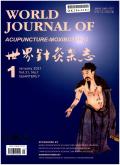Shugan Tiaoshen needling method for postherpetic neuralgia: A randomized controlled trial
IF 1.3
4区 医学
Q4 INTEGRATIVE & COMPLEMENTARY MEDICINE
引用次数: 0
Abstract
Objective
To observe the efficacy of Shugan Tiaoshen (liver-soothing and mind-regulating) needling method in the treatment of patients with postherpetic neuralgia (PHN).
Methods
A total of 66 patients with PHN were randomly divided into acupuncture group and control group, 33 cases in each one, by the random number table method. The acupuncture group received Shugan Tiaoshen needling method plus gabapentin, whereas the control group received the oral administration of gabapentin and sham acupuncture. Numerical Rating Scale (NRS), State-Trait Anxiety Inventory (STAI) and Pittsburgh Sleep Quality Index (PSQI) were used to evaluate the pain condition, anxiety symptom and sleep quality. The effective rate and adverse events were also evaluated and recorded during the treatment.
Results
After eight weeks of treatment, the NRS scores of the two groups were significantly lower than those before treatment (P < 0.05) at all time points, with statistically significant difference between the groups (P < 0.05). The scores of STAI and PSQI of the acupuncture group were significantly lower than the scores before treatment (P < 0.05). The scores of STAI for anxiety symptom and PSQI of the acupuncture group were significantly lower than the control group (P < 0.05), and the effective rate of the acupuncture group was significantly higher than that of the control group (P < 0.05). The incidence of adverse reactions in the acupuncture group was significantly lower than that in the control group (P < 0.05).
Conclusion
Shugan Tiaoshen needling method showed satisfactory efficacy in treating PHN, and could alleviate the pain, relieve the anxiety symptoms, promote sleep, and reduce the adverse reactions of gabapentin in patients with PHN.
疏肝调肾针刺法治疗带状疱疹后神经痛的随机对照试验
目的观察疏肝调肾针刺法治疗带状疱疹后神经痛的疗效。方法采用随机数字表法将66例PHN患者随机分为针刺组和对照组,每组33例。针刺组采用疏肝调肾针刺法加加巴喷丁,对照组采用加巴喷丁口服加假针刺。采用数值评定量表(NRS)、状态-特质焦虑量表(STAI)和匹兹堡睡眠质量指数(PSQI)评估疼痛状况、焦虑症状和睡眠质量。并对治疗期间的有效率和不良事件进行评价和记录。结果治疗8周后,两组患者NRS评分均显著低于治疗前(P <;0.05),组间差异有统计学意义(P <;0.05)。针刺组患者的STAI、PSQI评分均显著低于治疗前(P <;0.05)。针刺组患者焦虑症状STAI评分、PSQI评分均显著低于对照组(P <;0.05),针刺组有效率显著高于对照组(P <;0.05)。针刺组不良反应发生率显著低于对照组(P <;0.05)。结论疏肝调肾针刺法治疗PHN疗效满意,可减轻PHN患者疼痛、缓解焦虑症状、促进睡眠,减少加巴喷丁不良反应。
本文章由计算机程序翻译,如有差异,请以英文原文为准。
求助全文
约1分钟内获得全文
求助全文
来源期刊

World Journal of Acupuncture-Moxibustion
INTEGRATIVE & COMPLEMENTARY MEDICINE-
CiteScore
1.30
自引率
28.60%
发文量
1089
审稿时长
50 days
期刊介绍:
The focus of the journal includes, but is not confined to, clinical research, summaries of clinical experiences, experimental research and clinical reports on needling techniques, moxibustion techniques, acupuncture analgesia and acupuncture anesthesia.
 求助内容:
求助内容: 应助结果提醒方式:
应助结果提醒方式:


